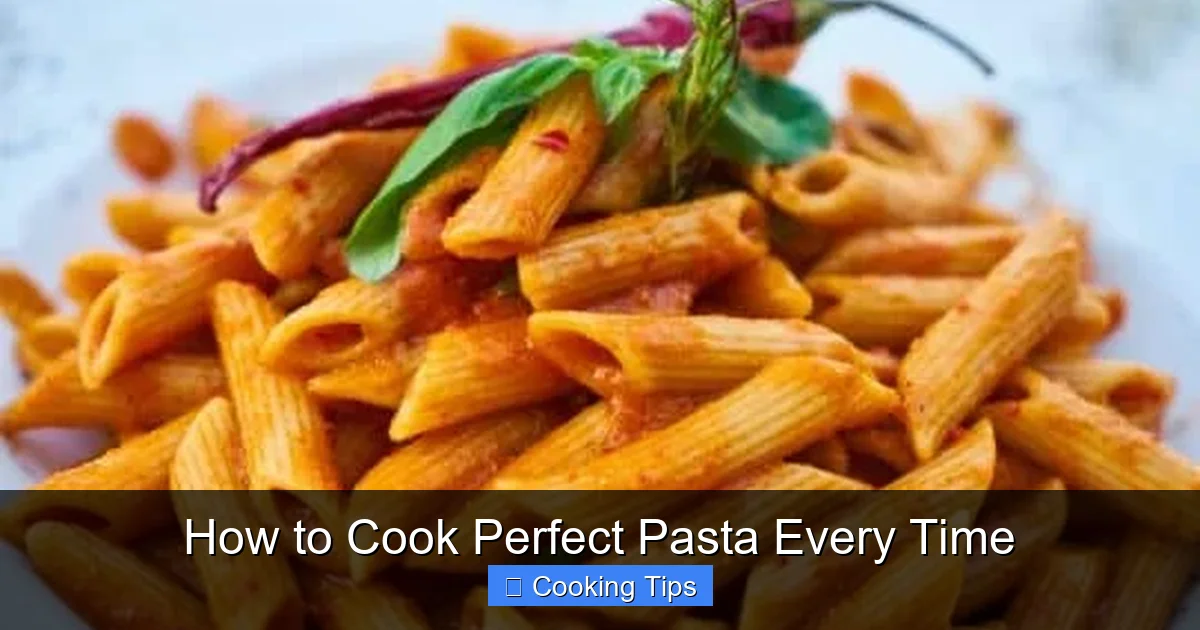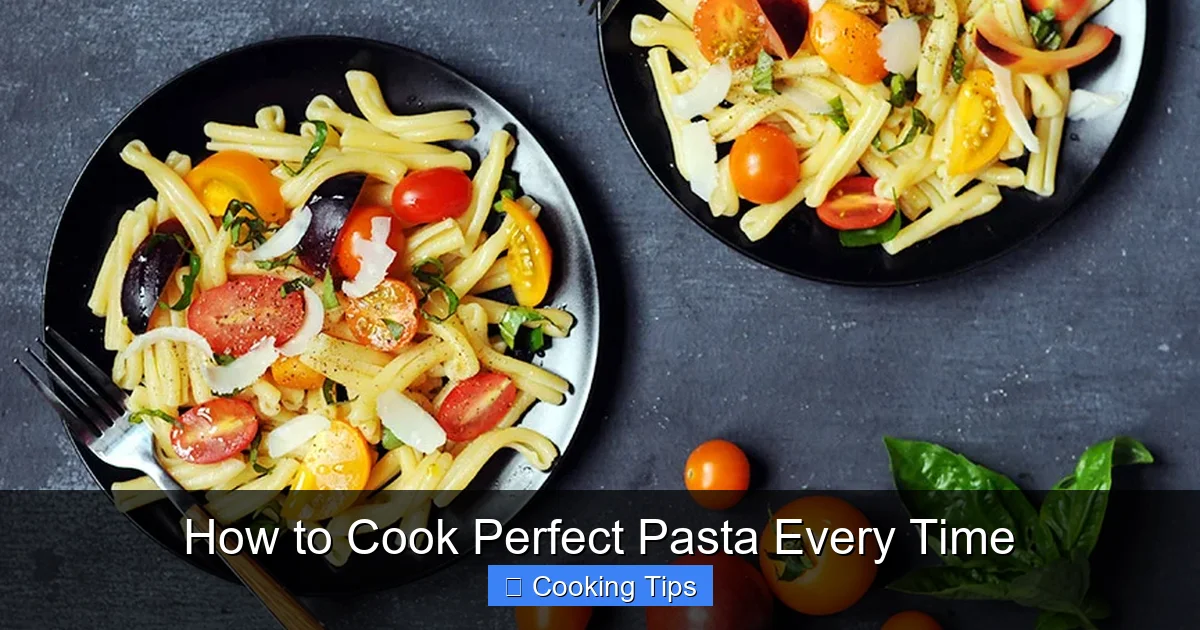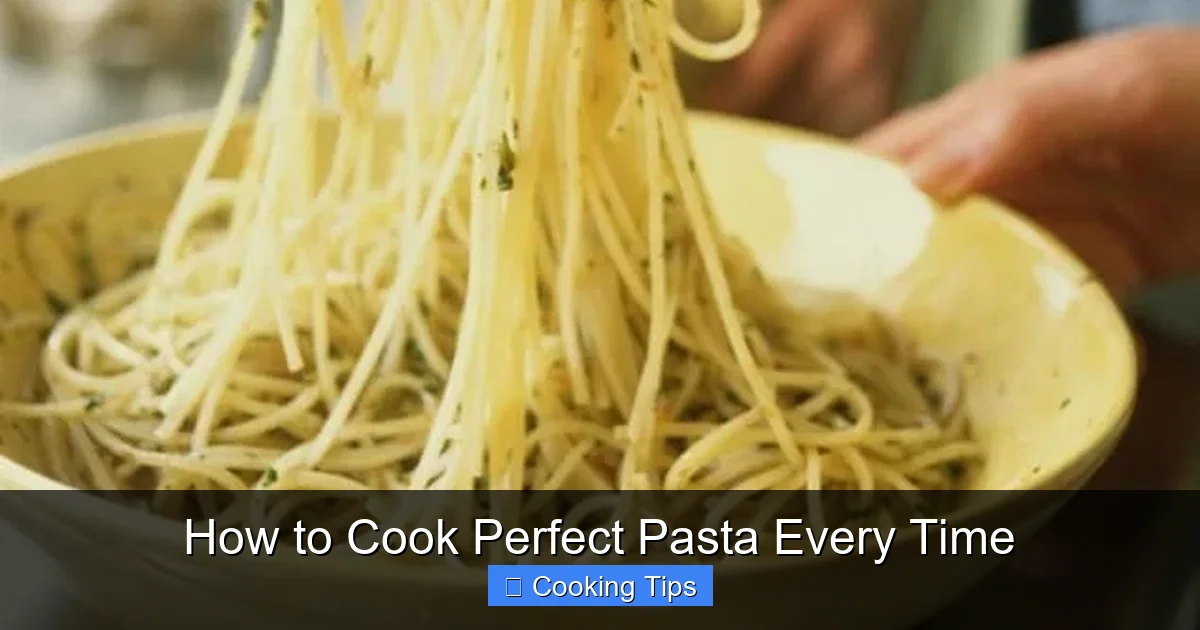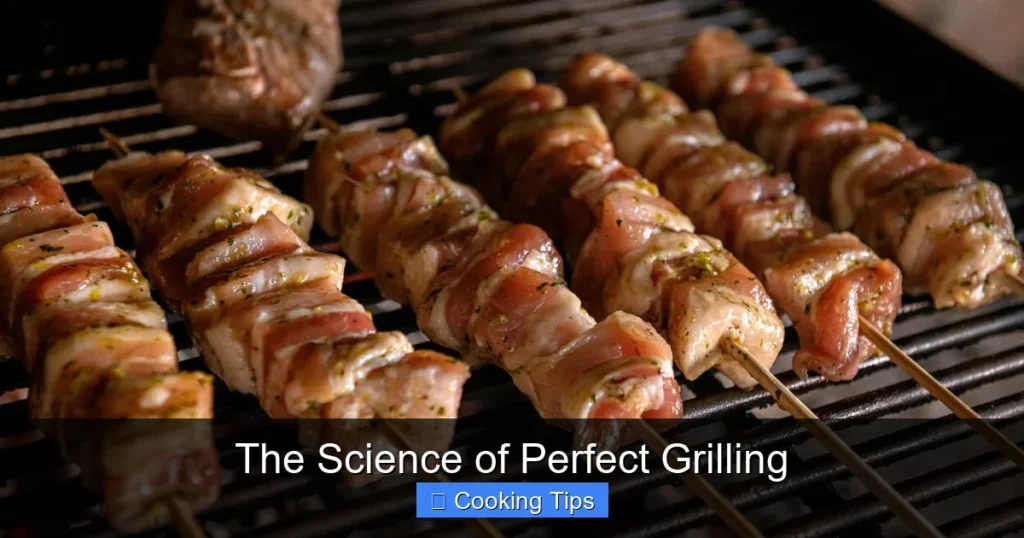
Featured image for this comprehensive guide about perfect pasta cooking tips
Image source: blogchef.net
Welcome, fellow food enthusiasts, to the ultimate guide on achieving culinary perfection with one of the world’s most beloved dishes: pasta! We all love a good pasta dish – the comforting aroma, the tantalizing textures, and the sheer joy it brings to the table. Yet, while it seems simple on the surface, mastering the art of cooking pasta can feel like an elusive quest for many home cooks. Have you ever wondered why your pasta sometimes turns out gummy, sticky, or bland, rather than the firm, flavorful strands you dream of? You’re not alone.
The secret to truly spectacular pasta lies in understanding a few fundamental principles and executing them with precision. It’s not just about boiling water; it’s about a delicate balance of timing, technique, and a touch of culinary intuition. Forget what you think you know about throwing pasta against the wall (please don’t!) and prepare to elevate your pasta game to professional levels. Whether you’re a beginner struggling with basic techniques or an experienced cook looking to refine your skills, these comprehensive perfect pasta cooking tips are designed to transform your kitchen into a pasta perfection factory.
Get ready to unlock the secrets to consistently delicious, perfectly textured pasta, every single time. From selecting the right type of pasta to mastering the critical moment of ‘al dente,’ we’re diving deep into every crucial step. Say goodbye to mediocre pasta and hello to plates that sing with authentic flavor and texture. Let’s embark on this delicious journey together to truly cook perfect pasta!
Quick Answers to Common Questions
How much water do I really need for perfect pasta?
You need a lot! Use at least 4-6 quarts of water per pound of pasta to give it ample space to move and cook evenly, which is crucial for truly perfect pasta.
When should I salt the water for the best flavor?
Always salt your water generously *before* adding the pasta – it should taste like the ocean! This is essential for infusing flavor directly into the strands and achieving truly perfect pasta taste.
Should I add oil to the boiling water to prevent sticking?
Skip the oil! Adding oil to the water can actually make your perfect pasta too slippery for your delicious sauce to cling to later, so it’s best to avoid it.
How do I know when my pasta is perfectly cooked?
The secret to perfect pasta texture is tasting! Cook it until it’s “al dente” – firm to the bite but not hard – checking a minute or two before the package suggests.
Should I rinse my cooked pasta with cold water?
Never rinse your perfect pasta! The starchy film left on the pasta is key for helping your sauce adhere beautifully, so drain it directly and toss with your favorite sauce.
📋 Table of Contents
- The Foundation: Choosing Your Pasta Wisely
- The Water Factor: Quantity, Salt, and Boil
- The Art of Al Dente: Timing and Testing
- Beyond the Boil: Rinsing, Draining, and Saucing
- Common Pasta Pitfalls and How to Avoid Them
- Advanced Pasta Perfection: Tips for the Pros
- Pasta Perfection Data Table: Typical Cooking Times & Water Ratios
- Conclusion: Master Your Pasta Destiny
The Foundation: Choosing Your Pasta Wisely
Before you even think about boiling water, the journey to perfect pasta begins with a critical decision: the pasta itself. The vast world of pasta offers an incredible array of shapes, sizes, and compositions, each suited to different sauces and preparations. Making an informed choice here sets the stage for success. Understanding the differences between dry and fresh pasta, and what to look for in quality products, is a cornerstone of our perfect pasta cooking tips.

Learn more about perfect pasta cooking tips – How to Cook Perfect Pasta Every Time
Image source: andrewzimmern.com
Dry Pasta vs. Fresh Pasta: Know Your Material
- Dry Pasta: Made from durum wheat semolina and water, then dried. It’s incredibly versatile, has a long shelf life, and forms the backbone of countless classic Italian dishes. Look for pasta made with “100% durum wheat semolina” and ideally, “bronze-die extruded.” Bronze dies create a rougher, more porous surface, which allows sauces to cling better. Mass-produced pasta often uses Teflon dies, resulting in a smoother, less sauce-friendly texture. High-quality dry pasta also retains its shape and chewiness much better.
- Fresh Pasta: Typically made with flour and eggs (or just flour and water for some vegan versions). It has a softer texture, cooks much faster, and is often reserved for delicate sauces or stuffed pasta like ravioli and tortellini. While glorious, it requires a different cooking approach due to its higher moisture content and shorter cooking time.
Matching Pasta Shape to Sauce
This is a fundamental rule for achieving a truly harmonious dish. The shape of your pasta isn’t just aesthetic; it’s functional.
| Key Action | Best Practice | Impact on Pasta Quality |
|---|---|---|
| **Water Quantity** | Use at least 4-6 quarts (4-6 liters) per pound (450g) of pasta. | Prevents clumping, allows even cooking, and maintains water temperature. |
| **Salting the Water** | Add 1-2 tablespoons of coarse salt per 4 quarts of water *before* adding pasta. | Crucial for flavoring the pasta from within; unsalted pasta will taste bland. |
| **Boiling & Agitation** | Ensure a vigorous, rolling boil; stir pasta frequently for the first 2 minutes. | Prevents pasta from sticking together and ensures quick, even cooking. |
| **Achieving “Al Dente”** | Taste 1-2 minutes *before* package suggested time. It should be firm but chewy (to the tooth). | The ideal texture, avoiding mushy or undercooked pasta, and better for sauce adherence. |
| **Draining & Finishing** | Drain quickly, reserving ~1/2 cup pasta water. Don’t rinse. Toss immediately with sauce. | Retains starch for sauce to cling to, prevents cold/sticky pasta, aids sauce consistency. |
- Long, Thin Pasta (e.g., Spaghetti, Linguine, Fettuccine): Best for lighter, oil-based sauces (Aglio e Olio), smooth cream sauces (Alfredo), or delicate tomato sauces that can coat each strand evenly. The sauce adheres beautifully without being overwhelmed.
- Short, Tubular Pasta (e.g., Penne, Rigatoni, Ziti): Excellent for chunky, heartier sauces with meat or vegetables (Bolognese, Amatriciana). The sauce can get trapped inside the tubes, delivering a burst of flavor with every bite.
- Twisted/Spiral Pasta (e.g., Fusilli, Rotini, Gemelli): Their nooks and crannies are perfect for capturing thicker, more robust sauces, pestos, or even cold pasta salads.
- Shells and Orecchiette: These act like tiny scoops, ideal for catching rich, creamy sauces or small pieces of vegetables.
- Stuffed Pasta (e.g., Ravioli, Tortellini): Usually served with very light, often butter or sage-based sauces, to let the filling’s flavor shine through.
By understanding these nuances, you’re already taking a significant step towards a perfectly balanced dish. Don’t underestimate the power of choosing the right pasta; it’s the first and arguably most important of our perfect pasta cooking tips.
The Water Factor: Quantity, Salt, and Boil
The water you cook your pasta in is not merely a vessel; it’s an active ingredient that profoundly impacts the final taste and texture of your dish. Skimping on water or salt are common mistakes that can lead to gummy, bland pasta. Let’s dive into the science behind the perfect pasta bath, a critical component of any guide on how to cook perfect pasta.

Learn more about perfect pasta cooking tips – How to Cook Perfect Pasta Every Time
Image source: cdn.mamamia.com.au
The Golden Ratio of Water
One of the most crucial perfect pasta cooking tips is to use plenty of water. A common guideline is at least 4-6 quarts (around 4-6 liters) of water for every pound (450g) of dry pasta. Why so much?
- Prevents Sticking: Ample water allows the pasta to move freely, preventing strands from clumping together. As pasta releases starch, less water means a higher concentration of starch, leading to stickiness.
- Maintains Temperature: Adding pasta to a small amount of water significantly drops the water’s temperature, prolonging the time it takes to return to a boil. This can lead to uneven cooking and mushy exteriors before the interior is properly cooked. A large volume of water recovers its boiling temperature quickly.
The Essential Role of Salt: Seasoning from Within
Seasoning the pasta water is non-negotiable. This is where your pasta gets its foundational flavor. Think of it like salting your meat before cooking; you can’t properly season after the fact.
- How Much Salt? The Italian saying goes, “The water should taste like the sea.” This translates to about 1-2 tablespoons of coarse sea salt or kosher salt for every gallon (4 liters) of water. Don’t be shy! Most of this salt goes down the drain, but enough is absorbed by the pasta to season it from the inside out.
- Why Not Fine Salt? Coarse salt dissolves slower, reducing the chance of over-salting initially. Fine salt can be used, but measure carefully.
- When to Add Salt? Always add salt once the water has come to a rolling boil. Adding it earlier can corrode pots, and adding it too late means it won’t dissolve properly or penetrate the pasta effectively.
Never add oil to your pasta water. This is a common myth. Oil floats on top of the water and coats the pasta, preventing the sauce from properly adhering. If your pasta is sticking, you likely need more water or you’re not stirring enough.
Achieving a Vigorous Boil
Before adding your pasta, ensure the water is at a “rolling boil” – that is, large, active bubbles are continuously breaking the surface.
- Why a Rolling Boil? This high temperature ensures that the pasta begins cooking immediately and evenly. If the water isn’t boiling vigorously, the pasta will sit in lukewarm water, becoming gummy and soaking up too much water before it even starts to cook properly.
- Adding Pasta: Once the water is at a furious boil, add your pasta. For long pasta like spaghetti, don’t break it! Let the ends soften in the water, then gently push it down with tongs until it’s fully submerged.
- Stir Immediately: As soon as the pasta is in the pot, stir it gently but thoroughly for the first minute or two. This prevents the pasta from sticking to itself or the bottom of the pot, especially crucial for dry pasta which releases surface starches initially.
By respecting these steps for the water factor, you’re building a strong base for your perfect pasta dish. This attention to detail separates a good pasta meal from an extraordinary one.
The Art of Al Dente: Timing and Testing
The term “al dente” is synonymous with perfect pasta. It translates to “to the tooth,” describing pasta that is firm to the bite, offering a slight resistance without being hard or raw. Achieving this elusive texture is where many home cooks falter, making it a pivotal point in our perfect pasta cooking tips. It’s not just about following package directions; it’s about tasting and trusting your instincts.
Understanding Package Cooking Times
The cooking times listed on pasta packages are a good starting point, but they are just that: a guide. Factors like your stove’s heat, the type of pot, the altitude, and even the specific brand of pasta can influence actual cooking time. Always treat these times as suggestions, not commandments.
The Critical Moment: When to Start Testing
Begin testing your pasta about 2-3 minutes before the lowest recommended cooking time on the package. For example, if the package suggests 8-10 minutes, start testing around the 6-minute mark.
- How to Test: Carefully retrieve a piece of pasta from the pot with tongs or a fork. Let it cool for a second to avoid burning your mouth, then bite into it.
- What to Look For:
- Raw: If it’s hard, chalky, or has a distinct white core, it needs more time.
- Al Dente: It should be firm, springy, and offer a slight resistance when you bite through it. There might be a very thin, almost translucent white dot in the very center, but it shouldn’t be opaque or floury.
- Overcooked: Mushy, soft, and offers no resistance. This is what we’re trying to avoid!
Remember, the pasta will continue to cook slightly after it’s drained, especially when tossed with a hot sauce. Aim for slightly under al dente if you plan to finish cooking it in the sauce.
The “Finishing in the Sauce” Technique
This is one of the most powerful perfect pasta cooking tips for flavor infusion. Many professional chefs advocate for finishing the pasta directly in the sauce.
- Drain Early: Drain your pasta when it’s just under al dente (a minute or two shy of perfect).
- Transfer to Sauce: Immediately transfer the pasta to your prepared sauce, which should be warm and ready in a large skillet or pot.
- Add Pasta Water: Ladle in about ½ to 1 cup of the starchy pasta cooking water. This water is liquid gold – the starch helps emulsify the sauce, making it cling beautifully to the pasta.
- Toss and Finish: Cook the pasta in the sauce over medium heat for 1-2 minutes, tossing constantly. The pasta will absorb some of the sauce’s flavor and finish cooking, achieving the ideal al dente texture while becoming perfectly coated.
This technique elevates the dish from good to extraordinary, ensuring every strand is infused with flavor. Mastering al dente is a skill that comes with practice, but with these guidelines, you’ll be well on your way to consistently creating the perfect pasta texture.
Beyond the Boil: Rinsing, Draining, and Saucing
The moments immediately after your pasta reaches al dente are just as crucial as the cooking process itself. How you handle your pasta post-boil can make or break its texture and its ability to meld harmoniously with your sauce. These are essential perfect pasta cooking tips often overlooked, moving beyond the simple act of boiling.
The Golden Rule: Never Rinse Pasta (Mostly)
This is a fundamental directive for anyone striving to cook perfect pasta: do not rinse your cooked pasta with cold water.
- Why Not? Rinsing removes the thin layer of starchy film that coats the pasta. This starch is vital for two reasons:
- It helps your sauce cling to the pasta. Without it, your sauce will slide right off, leaving you with naked pasta and a pool of sauce at the bottom of your plate.
- It contributes to the overall texture and mouthfeel, preventing the pasta from feeling “slippery” or overly clean.
- When to Rinse (The Exception): The only time you should ever rinse pasta is if you are making a cold pasta salad and want to stop the cooking process immediately and prevent sticking. Even then, draining thoroughly and tossing with a little olive oil can often suffice. For hot pasta dishes, it’s a definite no.
Draining with Precision
Once your pasta is perfectly al dente, it’s time to drain it.
- Use a Colander: Pour the pasta and cooking water into a colander placed in your sink. Give it a good shake to remove excess water, but don’t over-drain to the point of dryness.
- Reserve Pasta Water: This is a game-changer and arguably one of the most critical perfect pasta cooking tips. Always reserve at least 1-2 cups of the starchy cooking water before draining the rest. This cloudy, salty, starchy liquid is invaluable for:
- Emulsifying Sauces: It helps bind oil and water-based sauces, creating a silky, cohesive coating.
- Adjusting Sauce Consistency: If your sauce is too thick, a splash of pasta water can thin it out without diluting its flavor.
- Finishing Pasta: As discussed, adding pasta water when finishing pasta in the sauce helps it absorb flavor and achieve the perfect texture.
The Art of Saucing: Marrying Pasta and Sauce
The final step before serving is bringing your pasta and sauce together.
- Don’t Drown It: Never serve pasta with a blob of sauce dumped on top. The goal is for the pasta to be lovingly coated, not swimming.
- Toss Immediately: As soon as the pasta is drained (and often transferred directly from the pot to the sauce), toss it with the sauce. This ensures every piece is evenly coated and hot.
- Heat Together: As mentioned in the “al dente” section, finishing the pasta in the sauce for a minute or two over heat helps the pasta absorb the sauce and binds everything together beautifully. This also allows the starch from the pasta to thicken the sauce slightly, creating that coveted emulsified texture.
- Add Finishing Touches: A drizzle of extra virgin olive oil, a sprinkle of fresh herbs, or a generous grating of Parmesan or Pecorino cheese can elevate your dish even further.
By following these post-boil steps, you ensure that your perfectly cooked pasta finds its perfect partner in the sauce, resulting in a cohesive, flavorful, and truly satisfying meal. These subtle yet powerful adjustments are key to truly consistently cook perfect pasta.
Common Pasta Pitfalls and How to Avoid Them
Even with the best intentions, mistakes can happen in the kitchen. When it comes to pasta, certain pitfalls can quickly derail your efforts to achieve perfect pasta. By understanding and avoiding these common errors, you can significantly improve your chances of success. Let’s look at some prevalent pasta problems and practical solutions, crucial knowledge for any list of perfect pasta cooking tips.
1. Sticky, Clumpy Pasta
The Problem: Your pasta emerges from the pot in an unappetizing clump, sticking together or to the bottom of the pot.
The Fix:
- Use More Water: The most common culprit. Ensure you’re using plenty of water (at least 4-6 quarts per pound of pasta) to give the pasta room to move and dilute released starches.
- Stir Immediately: Stir the pasta within the first minute or two of adding it to the boiling water. This prevents initial sticking.
- Maintain a Rolling Boil: If the water isn’t boiling vigorously, the pasta will sit and release starch without sufficient agitation.
- Don’t Overcrowd the Pot: If you’re cooking a large batch, consider using a bigger pot or cooking in batches.
2. Bland or Unseasoned Pasta
The Problem: Even with a flavorful sauce, your pasta itself tastes flat and uninspired.
The Fix:
- Salt the Water Generously: This is a non-negotiable step. The water should taste like the sea (1-2 tablespoons of salt per gallon). This seasons the pasta from the inside out. Remember, you can’t properly season pasta after it’s cooked.
3. Gummy or Mushy Pasta
The Problem: Your pasta is soft, lacks chewiness, and feels somewhat slimy.
The Fix:
- Don’t Overcook: This is paramount. Start testing your pasta 2-3 minutes before the package’s recommended time. Aim for “al dente” – firm to the bite.
- Use Ample Water: As discussed, too little water means the temperature drops too much, leading to uneven cooking and often, mushy pasta.
- Avoid Rinsing: Rinsing removes the protective starch layer, which can contribute to a gummy feel, especially if the pasta sits too long.
4. Sauce Doesn’t Cling to Pasta
The Problem: The sauce pools at the bottom of the plate, and the pasta strands are bare.
The Fix:
- Don’t Rinse Pasta: This removes the starch layer essential for sauce adhesion.
- Finish Pasta in Sauce: This technique allows the pasta to absorb sauce and for the starches to help emulsify the sauce, creating a beautiful cling.
- Use Reserved Pasta Water: The starchy pasta water is key to achieving a cohesive, clingy sauce.
- Match Pasta Shape to Sauce: Ensure your pasta shape is suitable for your sauce (e.g., ridged pasta for chunky sauces, smooth for delicate ones).
5. Breaking Long Pasta (Spaghetti, Linguine)
The Problem: You snap long pasta in half to fit it into the pot.
The Fix:
- Use a Taller Pot: Invest in a pot large enough to accommodate the full length of your pasta.
- Let it Soften: For long pasta, immerse one end in the boiling water. As it softens, gently push the rest of the pasta down until it’s fully submerged. Breaking it shortens the strands, which might not be ideal for certain dishes and sauce distribution.
By being mindful of these common mistakes and implementing these solutions, you’re well on your way to consistently producing perfect pasta dishes that are both delicious and aesthetically pleasing. These adjustments are vital for anyone serious about improving their pasta cooking.
Advanced Pasta Perfection: Tips for the Pros
Once you’ve mastered the fundamentals of cooking pasta to perfection, you might be ready to explore more nuanced techniques that elevate your pasta dishes from excellent to extraordinary. These advanced perfect pasta cooking tips are often employed by professional chefs and will truly set your pasta apart, bringing out richer flavors and textures.
The Power of Starch: Beyond Just Reserving Pasta Water
We’ve emphasized reserving pasta water, but understanding *why* it’s so powerful is key. The starch released by the pasta acts as an emulsifier, binding water and fat together. This creates a silky, glossy sauce that coats every strand beautifully. For an even more potent starch bomb:
- “Splash and Stir” While Cooking: Towards the end of the pasta’s cooking time, instead of just draining, use a spider or tongs to transfer the pasta directly from the pot to your pan of simmering sauce. This brings a little extra starchy water along for the ride naturally.
- Reduce Pasta Water: For a super-concentrated starch kick, take a ladle or two of pasta water, bring it to a simmer in a small pan, and reduce it slightly. Then add this reduced, super-starchy liquid to your sauce.
Toasting Dry Pasta (Tostatura): A Flavor Bomb
This is a technique less common in home kitchens but a revelation for flavor. For some dry pasta dishes (especially those with simple, light sauces), lightly toasting the dry pasta before boiling can add incredible depth.
- Dry Toast: In a large, dry skillet or pot over medium heat, add your dry pasta.
- Stir Constantly: Stir the pasta frequently for 3-5 minutes until it turns a light golden brown and smells nutty, similar to toasting rice for risotto. Be careful not to burn it.
- Boil as Usual: Immediately transfer the toasted pasta to your pot of boiling, salted water and cook as normal.
The toasting process brings out a deeper, nuttier flavor in the wheat, adding another layer of complexity to your dish. This is especially good for dishes like Cacio e Pepe or Aglio e Olio.
Using the Right Utensils: Tongs, Spider, and Large Skillet
Having the right tools makes a significant difference.
- Tongs: Essential for stirring long pasta, testing for doneness, and transferring pasta to the sauce.
- Spider Strainer: An invaluable tool for delicately transferring pasta from the pot to the sauce, especially for delicate fresh pasta or stuffed pasta, while bringing along just the right amount of starchy water.
- Large Skillet/Sauté Pan: Always finish your pasta in a large, wide skillet with your sauce. This maximizes the surface area for the pasta to absorb the sauce and allows for easy tossing and emulsification. A deep pot is for boiling; a wide pan is for finishing.
Embracing Fresh Herbs and Quality Finishing Oils
The final touches can elevate your perfect pasta dish significantly.
- Fresh Herbs: Add fresh herbs (basil, parsley, mint, oregano) at the very end, off the heat, or as a garnish. Their delicate flavors and aromas are best preserved when not subjected to prolonged cooking.
- High-Quality Extra Virgin Olive Oil: A drizzle of good quality extra virgin olive oil just before serving adds a fruity, peppery note and a luxurious mouthfeel. It’s not just a garnish; it’s an ingredient.
By incorporating these advanced techniques and considerations, you’re not just cooking pasta; you’re crafting a culinary experience. These sophisticated perfect pasta cooking tips are what separate truly memorable pasta dishes from the rest.
Pasta Perfection Data Table: Typical Cooking Times & Water Ratios
While package instructions are a guide, and tasting is paramount, having a general understanding of typical cooking times and optimal water ratios for different pasta types can be incredibly helpful. This table provides estimated cooking times for dried pasta to achieve an “al dente” texture, assuming a vigorous boil and proper salting. Please use this as a reference point, and always begin tasting a few minutes before the minimum suggested time.
| Pasta Type | Approx. Dry Weight (per serving) | Typical Cooking Time (Al Dente) | Water Volume (per 1 lb pasta) | Ideal Sauce Pairing |
|---|---|---|---|---|
| Spaghetti | 100-120g (3.5-4 oz) | 8-12 minutes | 4-6 Quarts (4-6 Liters) | Tomato, Pesto, Aglio e Olio |
| Penne | 100-120g (3.5-4 oz) | 10-13 minutes | 4-6 Quarts (4-6 Liters) | Arrabbiata, Vodka, Meat Sauces |
| Fettuccine | 100-120g (3.5-4 oz) | 7-10 minutes | 4-6 Quarts (4-6 Liters) | Alfredo, Carbonara, Cream Sauces |
| Rigatoni | 100-120g (3.5-4 oz) | 11-14 minutes | 4-6 Quarts (4-6 Liters) | Hearty Meat Ragus, Baked Pasta |
| Farfalle (Bow Ties) | 100-120g (3.5-4 oz) | 9-11 minutes | 4-6 Quarts (4-6 Liters) | Creamy sauces, Pasta Salads, Vegetable Sauces |
| Lasagne Sheets (oven-ready) | (Varies, no boil usually) | Typically no boil; 20-30 min bake | N/A | Bolognese, Béchamel, Ricotta |
| Fresh Pasta (e.g., Tagliatelle) | 120-150g (4-5 oz) | 2-4 minutes | 3-4 Quarts (3-4 Liters) | Light Butter Sauces, Sage, Delicate Seafood |
This table serves as a general guide to help you estimate cooking times and ensure you’re using enough water to achieve truly perfect pasta. Remember to adjust based on your specific brand and preference.
Conclusion: Master Your Pasta Destiny
You’ve journeyed through the comprehensive world of perfect pasta cooking tips, from the initial choice of pasta to the final, masterful plating. We’ve uncovered the critical role of ample, salty water, demystified the art of “al dente,” and unveiled the power of finishing your pasta directly in the sauce. By understanding these core principles and avoiding common pitfalls, you’re now equipped with the knowledge to consistently cook perfect pasta every single time.
Remember, cooking is an art form, and pasta is your canvas. Don’t be afraid to experiment, taste often, and adapt these tips to your personal preferences and the specific dishes you’re creating. The subtle nuances – the quality of your pasta, the robust boil, the timing, and that magical reserved pasta water – all contribute to a truly exceptional culinary experience. Embrace these techniques, practice them, and watch as your pasta dishes transform from good to absolutely glorious. Your next perfect bowl of pasta awaits!
🎥 Related Video: How To Cook The Perfect Pasta | Gordon Ramsay
📺 Gordon Ramsay
Top tips on how to how to cook angel hair pasta – with principles that you can apply to cooking any shape. If you have any others, …
Frequently Asked Questions
How do I achieve the perfect pasta texture?
Achieving perfect pasta means cooking it al dente, which is firm to the bite but not hard. This ideal texture ensures your pasta holds up well with sauces and doesn’t become mushy.
How much water and salt should I use for perfect pasta?
Always use a large pot with plenty of water – at least 4-6 quarts for a pound of pasta – to give it space to cook evenly. Generously salt the water until it tastes like the ocean, as this is the only chance to season the pasta itself.
What does “al dente” mean and how do I achieve it?
“Al dente” is an Italian term meaning “to the tooth,” referring to pasta that is cooked through but still firm when you bite into it. To achieve this, follow the package directions for cooking time, but start tasting a minute or two before the suggested time.
Should I add oil to the pasta water to prevent sticking?
No, adding oil to the pasta water is generally not recommended. While it might prevent some sticking, it can also coat the pasta, making it difficult for your sauce to adhere properly.
Is it necessary to rinse my cooked pasta?
You should almost never rinse your pasta after cooking, especially when making a hot dish. Rinsing washes away the beneficial starch on the surface of the pasta, which is crucial for helping your sauce cling to it.
What’s the secret to truly perfect pasta every time?
The true secret to perfect pasta lies in three things: abundant, well-salted water, cooking it precisely al dente, and always reserving some of the starchy pasta water. This reserved water is a chef’s secret weapon for emulsifying sauces and creating a luxurious texture.



